Having the right tool for a job makes all the difference. The right tool means saving time, saving money and producing quality work. It also saves your sanity because there is nothing more frustrating than trying to get a job done with the wrong tool or a cheap tool. That’s why we were excited about getting our hands on the Delta Planer model 22-590. Delta has a long history of making planers and is known for quality, so lets see if the 22-590 matches Delta’s reputation.
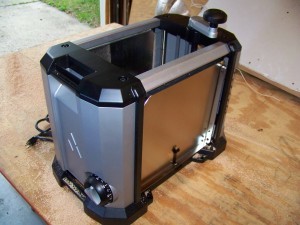
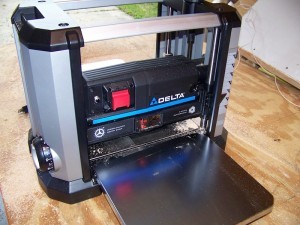
Specifications of the Delta
-
13″ Portable Planer
-
6″ Max Stock thickness
-
3 Double Sided Cutting Knives
-
15 Amp Motor
-
10,000 No Load / 8,000 Load RPM
-
96CPI
-
2″ Diameter Cutting Head
-
Carriage Lock System
-
Micro adjust depth stop
-
Nitrile Rubber infeed/outfeed Rollers
-
76 Lbs.
-
5 yr warranty
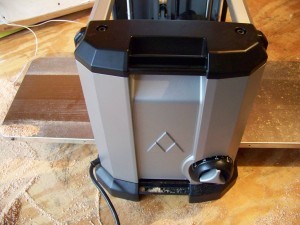
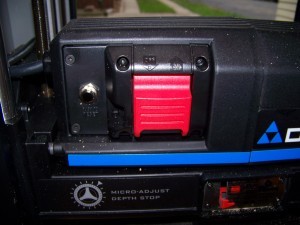
We are not ones to really read directions, come on we are guys. However for legal reasons we do suggest you always read owners manuals for any tool. Most of the time we don’t read direction because they suck. With the planer we did want to make sure set up was right and we didn’t do anything to hurt the machine or us. We found the directions very easy to read and follow, so they were actually helpful. The only downside to the manual is they didn’t have any pop ups or coloring pictures. We spent about 10-15 minutes on set up of the machine. We had to attach a couple of handles and we were set to go.
As the title indicates this is a portable planer, while it does weigh 76 lbs. the top and bottom handles make it easier to move around. Delta also designed into the base of the planer four spots to bolt the planer in place. When we ran the machine, we didn’t have it bolted down. Weighing 76 lbs and the smooth operation kept the planer in place.
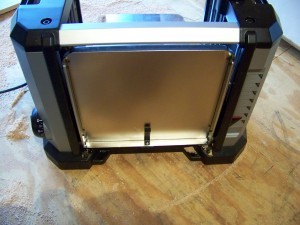
On each side of the machine there are tables, infeed and outfeed. The tables are spring latched to keep them in place. One thing we did notice when we lowered the tables was the quality. They are not cheap. Actually they are thick metal and very sturdy. We didn’t need to, but if you need to adjust the tables, there are two support screws on each side to make minor height adjustments. One thing to note is that everything on the planer is easy to access. Changing the blades or attaching the dust port is a snap. Delta includes a small magnetic tool, so it saves time having to rifle through your tool box to find a tool.
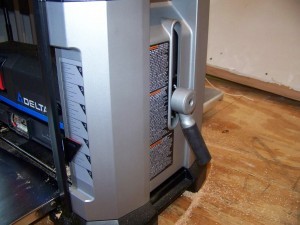
On the right hand side there is a manual cutterhead lock. The cutterhead lock is designed to reduce snipes on your finished product. Now we know some people would rather have an automatic locking system, but turning a knob a couple times won’t kill you. Just remember to unlock the heads before doing any height adjustment. Using the machine for a while, we did notice the locking head system actual worked. While we did get some boards to have snipes on the end of them, it did reduce the amount of snipes we had significantly.
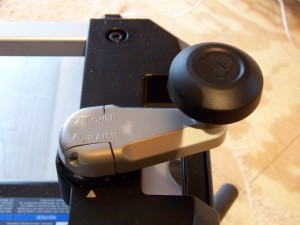
On the top right is where you will find the height adjustment. This is a manual crank that the user can spin either way to adjust the height up to 6″. The crank handle is attached to two 1/2″ stainless steel rods. Underneath the base is the chain used for the weight adjustments. Then the head of the planer rides up four 3/4″ stainless steel rods which is very smooth. If our math is correct, it takes 96 turns to move the head from the very top to the bottom, which is 6″. One full turn of the crank moves the head up or down 1/16″. So a quarter turn is 1/64″. Right underneath the handle is an adjustment ring that helps with fine tune adjustments, as fine as 1/128″ Using the ring is easy and practical.
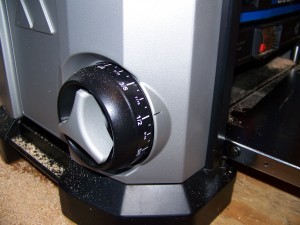
On the right hand side of the machine is a depth stop which is handy for repeated cutting. The adjustments range from 1/8″ to 1-1/4″. Just set the dial and as you rotate the head down, it will stop at that adjustment.
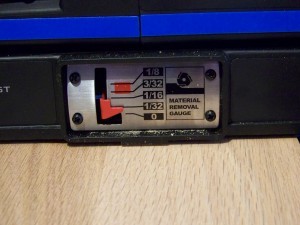
One cool feature is the material removal gauge. Not that this is new to planers, but Delta took it one step further. Other planers we have seen use an inverted pin for their removal gauge which means the user has one place to make the measurement. Delta uses a full length pressure bar which means no matter where you stick the wood in the planer, you will get an accurate reading. Just stick your wood in about 3″, lower the head onto the wood. Once the pressure bar hits your material, the gauge will start to move and you are set to go. Just make sure you remove the wood before you start the machine. Speaking of starting the machine, the power button is located on the front of the machine and is marked by a big red button. Next to the power button is a reset button for easy access. If you need to lock the power button, there are two holes that you can use a padlock to lock the switch in the off position.
Another cool feature is the dust collection system. Now we didn’t test the dust collection system, but it was very easy to set up. Just remove four screws and attach the provided dust chute and you are set to go. The outport is 4″ on the dust collection system. When we ran wood through the machine without the attachment, the wood was deflected down, so you don’t have wood shooting in all directions. Also there seems to be more than enough power pushing the wood out, so you won’t get any clogs if you use the dust collection attachment.
The meat and potatoes of the machine is the cutting head, well the motor too, but we will cover that in a bit. The system has three knives which produce a cleaner cut. The knives are not meant to be resharpened, but they are double sided. So once one side gets dull, just flip the blades and you are off to the races. New blades will run you about 50-60 dollars, so overall not too bad. We didn’t test this claim, but we heard these blades will last longer than other manufacturers three blade systems due to the angle the blades contact the wood. Another great way to make your blades last is by alternating every cut. So if you run wood through on the left side of the planer, the next time you make a pass, use the right side and so on. Changing the blades takes about ten minutes. The owners manual provides detailed instructions on how to flip and replace the blades.
Performance
As we noted this bad boy packs a powerful punch with a 15 amp motor. With the three cutting blades it rips through just about anything and leaves a clean finish. The three knife system provides about 50% more cuts per minute over a two head system, so we were happy Delta decided on the three blades. We ran a bunch of wood through the machine, both hard and soft wood and each time we were impressed by the end results. If you watch the video below you can see the planer in action, unfortunately the camera doesn’t do justice in showing the finished product.
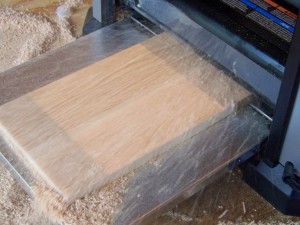
In soft wood you can make 1/8″ cut for wood up to 6″ wide and 1/16″ for wood 6″ – 13″ wide. Hardwood you can make 1/8″ cut up to 4″ wide and from 4″ to 13″ wide the max is 3/64″. Now we are taking Delta’s word for this since they did design the machine. Usually we try to get tools to bog down, but in this instance there was no point.
The locking cutterhead lock works great by reducing snipes in your board. Just remember if you are cutting a long piece of wood, make sure you have supports on the outfeed end to prevent any snipes. With both tables open you get a total of 35″ of planning surface.
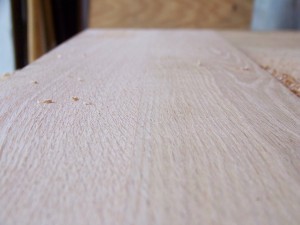
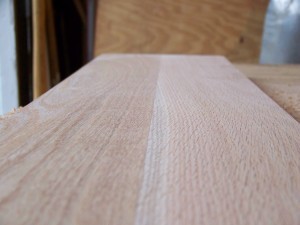
Conclusion
Overall this is an awesome planer and Delta matched their reputation by producing a quality planer. Yes we know some of you might not like the manual cutterhead locking system, but everything else this planer has to offer we think outweighs the manual lock. We were happy Delta decided to go with a three blade system to provide a better finished product. While the material removal gauge is not new, we like how Delta incorporated a full length pressure bar, so the user can insert the wood anywhere to get a reading instead of the inverted pin system. As you probably have noticed from reading the review we could go on and on about the pros to this machine, but we won’t recite everything again. This is one bad *ss planer and this would be a planer any woodworker would be proud to show off in their workshop.
We always like to hear back from our readers on their experience with these tools – good or bad. Do you have experience with these tools? How has the long term use been? What applications have you used the tool for? Is this a DIY or professional grade tool? Let us and other readers know. BUY NOW

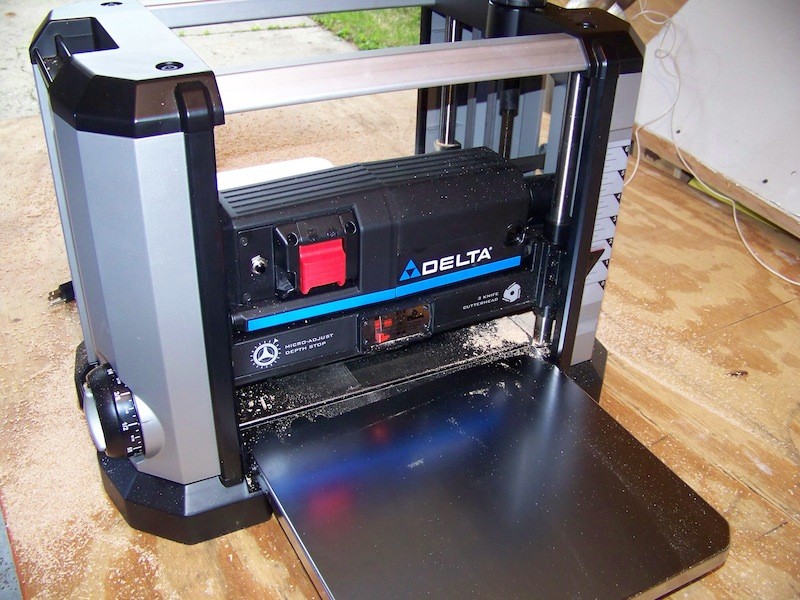

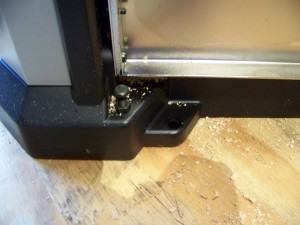
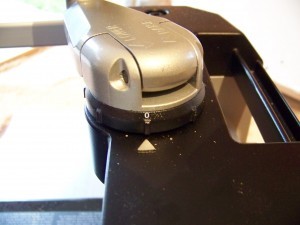
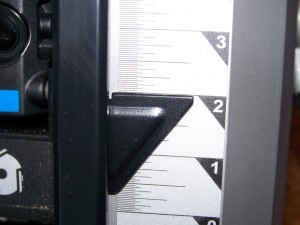
A very thorough review. From the video that looks like it goes through very smooth. I have been looking for a small planer for a while now and this fits my needs perfectly.
Thank you.
‘
=
I bought this new planer to replace my original Delta 12″ planer. I made 3 passes on soem pine and the planer stopped working. Removal of the right side and drive blet gaurd revealed a mangled drive belt. Of course this happened on a weekend when every home woodworker uses their tools and customer service only works when we work our regaular job. So now I’m suck for the weekend with an unusable tool. I had to revert back to my old one which is 12 years olde and never replaced belt. At this point quality is questionableand confirms Delta’s quality has gone down hill farther than I thought! Depending on how I make out Monday determines my perception going forward.
I live in a country where the electric power source is 220 VAC, 60 hz, will the planer work just fine using a 120 VAC step down transformer or do you have this planer available for 220 VAC?
I have a delta planet model have not used in a year it will not go up or down is there an owners manual